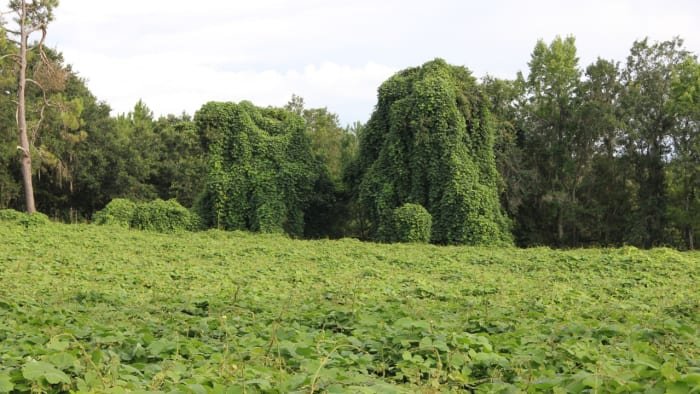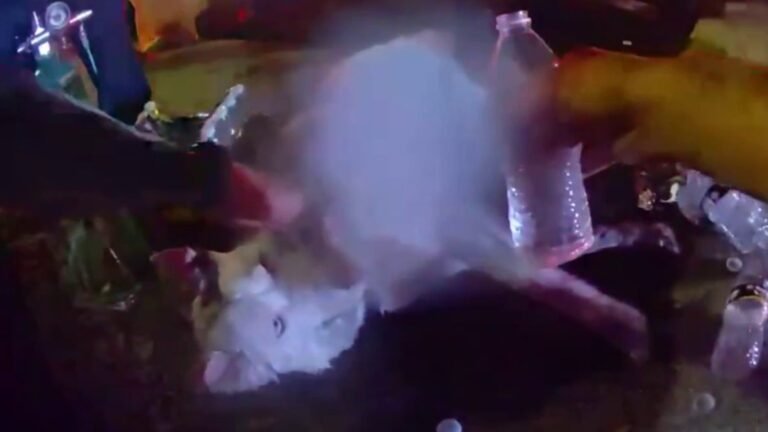Introduction
If you’ve ever driven along the highways or walked through parks in Central Florida, you may have noticed dense green vines climbing trees, fences, and even utility poles. This aggressive invader is none other than kudzu, a plant originally from Asia that has become one of the most notorious invasive species in the southern United States. Here in Orlando, kudzu is not just an eyesore—it’s a serious ecological threat that’s changing the landscape and challenging property owners and city officials alike. In this article, we’ll explore what makes kudzu such a problem, how it’s affecting Orlando, and what’s being done to control its relentless spread.
What is Kudzu and How Did It Get to Florida?
Kudzu (Pueraria montana) is a fast-growing vine native to East Asia. It was introduced to the United States in the late 1800s, initially promoted as a tool for erosion control and livestock forage. While it seemed like a good idea at the time, kudzu quickly outgrew its intended purpose. The plant thrives in the warm, humid climate of the South, which has allowed it to spread rapidly throughout states like Georgia, Alabama, and yes, Florida.
In Orlando, kudzu can be seen in both rural and urban settings, often blanketing trees and open land. The plant’s ability to grow up to a foot per day during peak season makes it especially difficult to contain. Its thick, leafy vines outcompete native vegetation, choking out trees and shrubs and altering the natural balance of our local ecosystems.
How Kudzu Threatens Orlando’s Environment
Kudzu’s impact on Orlando’s environment is significant. By smothering native plants, the vine reduces biodiversity and disrupts habitats for local wildlife. Birds, insects, and small mammals that rely on indigenous plants for food and shelter can be displaced as kudzu takes over.
The plant’s rapid growth can also damage infrastructure. In Orlando neighborhoods, kudzu can cover fences, power lines, and even creep into buildings if left unchecked. Its ability to form thick mats can make it difficult for maintenance crews to access utilities, leading to increased costs for the city and residents alike.
Furthermore, kudzu contributes to fire hazards. The dense mats of dead vines can become highly flammable during dry periods, increasing the risk of wildfires in Orlando’s green spaces and suburban areas.
Challenges for Property Owners and the City
For Orlando homeowners, gardeners, and land managers, kudzu is more than just an unsightly nuisance. The plant’s deep root systems make it tough to remove, often requiring repeated treatments or even professional intervention. Regular mowing, herbicide application, and manual removal are commonly used methods, but they can be labor-intensive and costly.
The City of Orlando’s Parks and Recreation Department has faced ongoing challenges in managing kudzu infestations in public parks, greenways, and right-of-ways. In areas like Lake Eola Park and the Orlando Urban Trail, crews are constantly on the lookout for new growth. The city often partners with local environmental groups to control kudzu and restore affected habitats, but the battle is ongoing.
If you’re a property owner in Orlando, it’s important to be vigilant. Early detection and prompt action can prevent kudzu from establishing a foothold on your land. The University of Florida’s IFAS Extension offers resources and guidance for managing invasive species like kudzu, which can be valuable for residents and businesses alike.
What’s Being Done to Combat Kudzu in Orlando?
Addressing the kudzu problem in Orlando requires a coordinated effort between city agencies, environmental groups, and the public. The city has implemented a combination of mechanical removal, chemical control, and community education to manage the spread of this invasive plant.
- Mechanical Removal: Mowing and cutting back kudzu vines can help reduce their presence, but it often takes repeated efforts to fully eradicate the plant due to its persistent root system.
- Chemical Control: Herbicides are sometimes used, particularly in areas where mechanical methods are impractical. However, care must be taken to avoid harming native plants and wildlife.
- Community Engagement: Local organizations such as the Orange County Environmental Protection Division have hosted workshops and volunteer events to educate residents about invasive species and encourage participation in removal efforts.
Additionally, ongoing research at the University of Central Florida and other institutions is focused on finding more sustainable, long-term solutions for kudzu control in our region. These efforts are crucial for protecting Orlando’s natural beauty and biodiversity for future generations.
How Residents Can Help
Everyone in Orlando can play a part in the fight against kudzu. If you spot kudzu growing on your property or in your neighborhood, report it to the city’s environmental services or local extension office. Avoid planting kudzu or transporting cuttings, as this can inadvertently spread the vine to new areas.
Consider volunteering for local cleanup events, where you can help remove invasive plants and restore native habitats. Sharing information about kudzu with friends and neighbors is another simple but effective way to raise awareness and encourage responsible land management practices.
Conclusion
Kudzu is more than just a fast-growing vine—it’s a formidable invader that threatens Orlando’s environment, economy, and way
















